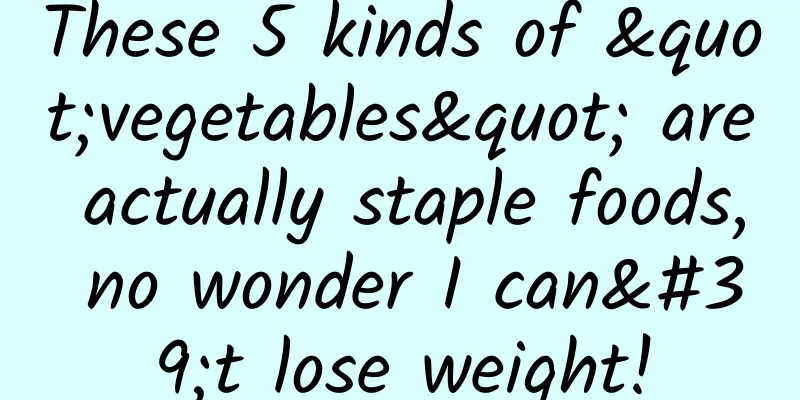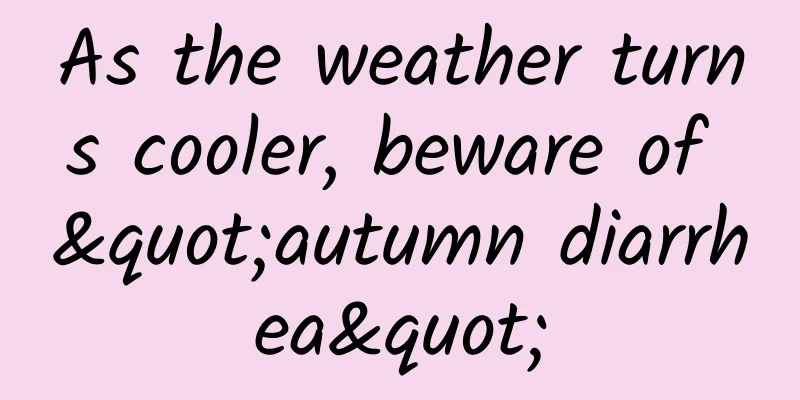These 5 kinds of "vegetables" are actually staple foods, no wonder I can't lose weight!

|
Friends who are losing weight are always worried that they will gain weight if they eat too much staple food . Limiting the intake of staple food has become a routine operation, but they often eat staple food that they think is vegetables without realizing it. Eating it once is not terrible, but what is terrible is that you have been fat for many years without knowing that "it" may actually be a staple food! ▲Photo: Photo Network Even if you want to lose weight, it is recommended that you eat an appropriate amount of staple food every day. However, there are 5 kinds of food that you must pay more attention to. Because they have a high carbohydrate content and higher energy than ordinary vegetables , they are often eaten as vegetables. No wonder you can't lose weight! This article will show you how these foods compare to rice, so that you can know what to eat. We will compare the data based on eating 100 grams of these foods or 50 grams of rice per meal. 50 grams of rice is about 100-130 grams of cooked rice. 1. Potatoes ▲Photo: Photo Network Many people think of potatoes as vegetables, and think that a plate of fried potatoes with rice is delicious. But you are wrong! Shredded potatoes + rice = staple food + staple food Potatoes, also known as potatoes, belong to the potato food. Cereal and potato food can be eaten as a staple food. Its carbohydrate content is not low, at 17.8 grams per 100 grams, which is 5 times higher than the common vegetables we often eat, such as Chinese cabbage, and the calories are nearly 4 times higher. It can completely replace part of the staple food. Moreover, potatoes are richer in dietary fiber than rice, which can enhance satiety, control food intake, and is more beneficial for weight loss. Potatoes are also richer in potassium and magnesium, which are also helpful in controlling blood pressure. 2. Yam ▲Photo: Photo Network Yam is also often regarded as a vegetable. Common dishes include yam stewed with pork ribs, yam fried with pork slices, yam fried with fungus, and blueberry yam. The carbohydrate content of different varieties of yam varies greatly, ranging from 11.6% to 29.2%, with an average of 18.7%. The starch content of Xishi seeds, Jipi rough, Tiegun yam, and Huai yam is not low. If you eat rice and eat fried yam crazily, you may gain weight! The potassium content of yam is also good, and eating it regularly is beneficial for controlling blood pressure. 3. Edamame ▲Photo: Photo Network Edamame is not only considered a vegetable by many people, but is also sometimes considered a snack. It is even more "exciting" to make a side dish for drinking. Not only is it very convenient to eat, but it is also... really delicious! The carbohydrate content of edamame is 10.5g/100g, but the calorie content is not low, almost catching up with 50g of rice. If you like to eat it, eat less staple food. It is worth mentioning that edamame is very good in protein, dietary fiber, potassium and magnesium content, and is excellent in enhancing satiety, promoting gastrointestinal motility, controlling blood pressure, and improving immunity. 4. Lotus root ▲Photo: Photo Network The taste of lotus roots varies depending on the variety. Some lotus roots taste crispy and are often used for stir-frying or cold salad; some lotus roots taste very soft and glutinous, and are used to make lotus root powder and osmanthus glutinous rice lotus root. The carbohydrate content of lotus root is 11.5g/100g, which is lower than that of potatoes, but higher than common vegetables, 1.4 times that of carrots, nearly 3 times that of white radish, and 3.4 times that of Chinese cabbage. The calories are also higher than them. Therefore, if there is lotus root in the dish, try to eat less of the staple food. 5. Pumpkin ▲Photo: Photo Network It depends on the variety of pumpkin. Not all pumpkins can replace staple foods. Some pumpkins are vegetable pumpkins and have a very low carbohydrate content. Some of the common Chinese pumpkins that have a juicy taste are pumpkins that can be used as vegetables. They have a carbohydrate content of only 5.3 grams per 100 grams and a water content of up to 93.5%. The pumpkin with low water content tastes very soft and has a higher carbohydrate content . For example, the carbohydrate content of Japanese pumpkin is 10.9 grams/100 grams, and the carbohydrate content of Indian pumpkin is as high as 20.6 grams/100 grams. The baby pumpkin and chestnut pumpkin that we often eat are both Indian pumpkins. Relatively speaking, they are more suitable to replace part of the staple food. Summarize: If you have the above 5 kinds of "vegetables" on the table, be careful not to treat them as vegetables and eat them with rice. References: [1] Yang Yuexin. Chinese Food Composition Table 6th Edition Volume 1[M]. Peking University Medical Press, 2018 [2] Japanese food composition table [3] Shu Rui, Li Xiaolong, Nie Yujie, et al. Comparative analysis of the main nutritional components of different varieties of yam [J]. Seed Science and Technology, 2019, 37(13): 33-34. |
<<: Longjiang Fun Science | Summer Watermelon Eating Guide
>>: If you miss this step when using air conditioning in the summer, it’s really easy to get sick!
Recommend
Revealed: How underwear affects desire
"My husband likes to wear tight white underw...
There are more than 20 preoperative examinations for myopia surgery. What are they checking for?
All-optical reshaping, all-femtosecond 4.0, ICL.....
We all know that playing with mobile phones is harmful to our eyes, but did you know that it can also shorten your life?
Sitting in front of the computer for 8 hours at w...
Can female urinary tract infections heal on their own?
Urinary tract infection is a problem that many wo...
What is the reason for leucorrhea with blood after menstruation?
Menstruation is a physiological phenomenon unique...
How long will it take for the baby to be born if the uterus contracts and the back aches
If there are no unexpected events, women will ent...
What is the brown sticky liquid that women secrete?
It is a very common situation for women to secret...
What is the significance of the central bank's digital currency? Introduction to the central bank's digital currency and its issuance time
Digital currency can be understood as the digitiz...
Women suffer from insomnia and hot body at night
If you feel uncomfortable all over and feel hot a...
What can pregnant women use to dye their white hair
Pregnant women cannot dye their hair, mainly beca...
The fourteen most delicate parts of a woman
If a woman dyes her hair more than 12 times a yea...
Normal values of three thyroid function tests during pregnancy
During pregnancy, some of the thyroid hormone nee...
How to remove stretch marks after childbirth?
Postpartum women are very concerned about changes...
Postpartum acne on the chin
After finally getting through the painful pregnan...
How to treat early ectopic pregnancy
Generally speaking, in a normal pregnancy, the fe...









